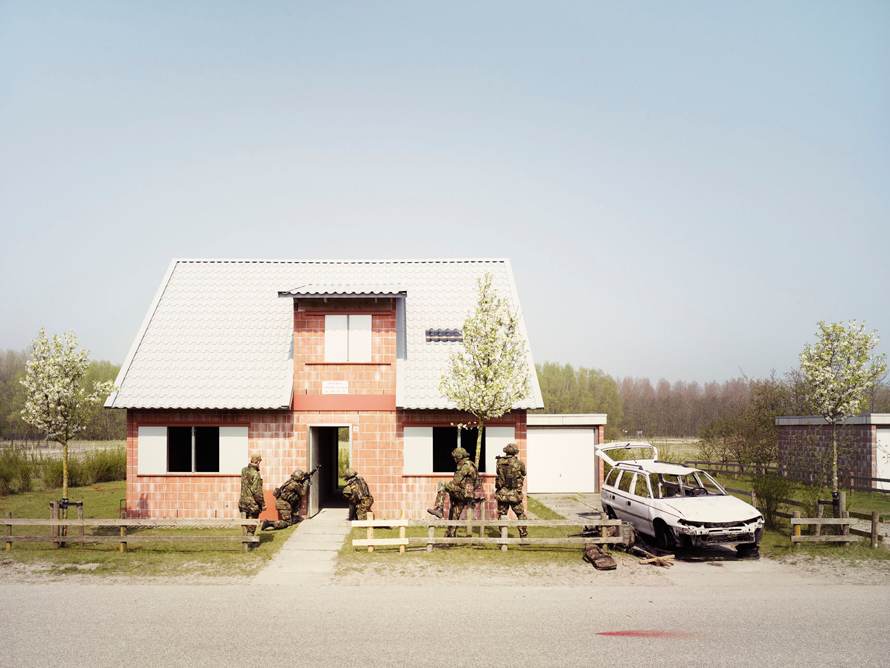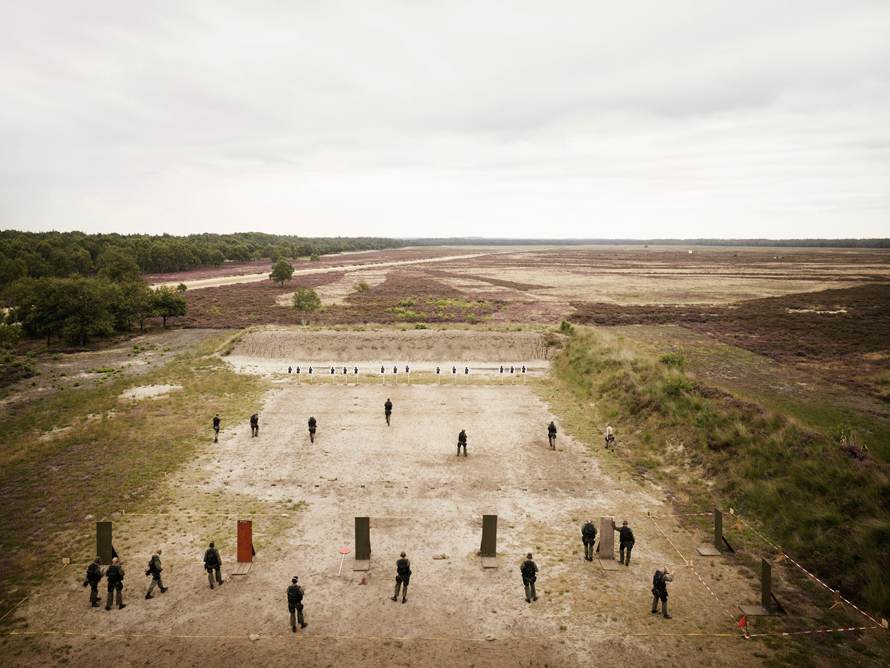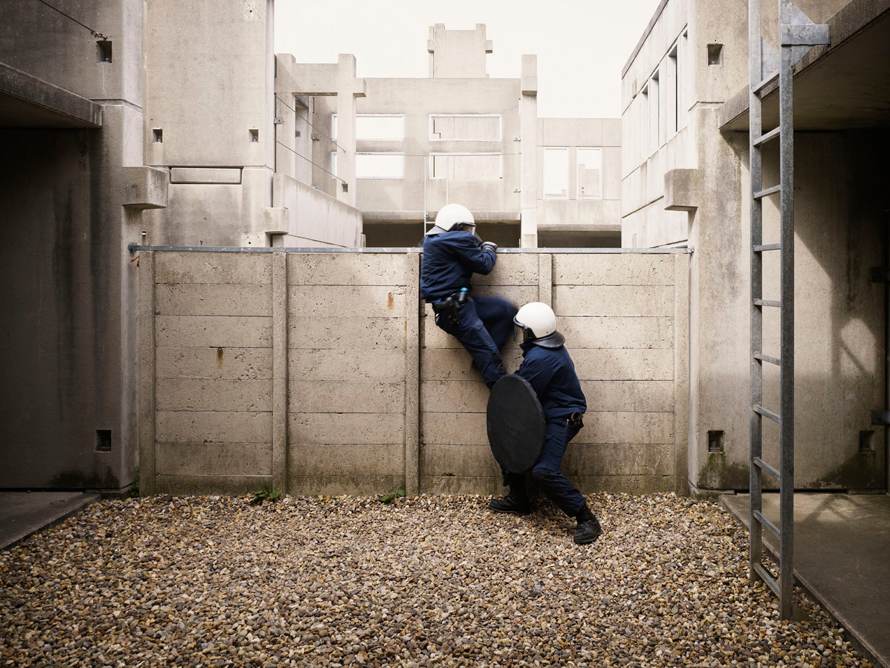How did you come to be in these locations in the first place?
Jeroen Hofman:It all started when I was at the Maasvlakte (an area near the harbor of Rotterdam) looking for a location for a series of photographs. Completely by accident I found myself driving through a post-apocalyptic landscape: blackened industrial complexes, a concrete building, scattered burned-out vehicles, all surrounded by refineries and heavy petrochemical industry. Only when I got closer, I realized something wasn’t right. There was nobody living in the building. This ghost town turned out to be a training ground where Shell and BP’s offshore crews prepare for possible industrial fires.
TMN:The scenarios you found are serious, but in the pictures they’re detached, as if we’re watching children play with toys. Did you notice this early on? Was it part of your attraction?
Jeroen Hofman:The training grounds in my project are also secret worlds—with one essential difference. These are safe enclosed playgrounds. Training here is play, theater in a hidden world. “For real,” but not really—not yet, and hopefully never. These areas are often huge in scale. The largest one in our country is Marnehuizen. It’s a complete military training town: houses, a bank, a supermarket, town hall, train station. It even has a sewer system. Everything there is fully functional. If you have ever played with LEGO you will immediately notice the similarity.
TMN:Can you imagine doing a book where the emergencies were actually taking place?
Jeroen Hofman:In these facilities it’s all just play: stage-acting on a few enclosed square meters. If you make a mistake, you get to try again. Wrong decisions do not have fatal consequences. But what I call “Playground” will someday become reality for the people in these photographs. For some this will happen sooner than they think. The Marine Corps trained at Marnehuizen for their mission in Uruzgan. They were the last group that shipped out before the mission was terminated. At the edge of the training ground they’d built a small compound surrounded by a wall like the ones you find all over Afghanistan. It was the marines’ job to go looking for explosives and narcotics. Two months after I made the photograph, they were sent to Uruzgan. A few of those marines lost their lives there.That’s the dividing line where “Playground ends” and reality begins—the deadly seriousness that follows, the real world, I would not like to be standing over that in a cherry-picker.
TMN:What are you working on now?
Jeroen Hofman:The launch of my book Playground was on Nov. 3. Self-publishing is a lot of work. It is like climbing a mountain, and after the summit you have to go back down—that is what I am doing right now. Self-publishing is self-distributing and self-promoting, and that is an awful lot of work.
So I am working on a lot of assigned jobs now to pay back the printers of my book. I have always loved a mix of commissioned and non-commissioned work. For now I am orientating myself to find a good representative in the UK and USA.











